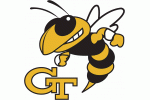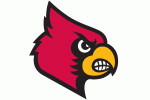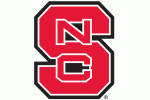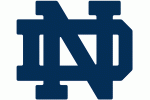The Seminoles may be the team to beat in the ACC.

Who: UNC (15-3, KenPom #6, AP #11) vs Florida State (16-1, KenPom #16, AP #9)
When/Where: 2:00 pm, ESPN
Let’s start with something you might have skipped right by.
Florida State is 16-1. That is not a typo. And it is not a mirage, either.
In the most favorable circumstances, playing a Leonard Hamilton-coached Seminoles team is unpleasant. Hamilton, the Gastonia native who has been at FSU since 2002 (how is that possible?), has put his signature on Seminole basketball. Whether it’s one of his stronger teams or a leaner year, when you play FSU, you’ve got a fight on your hands. His teams tend to be physical, big, and defensively aggressive, making you earn everything you get.
The 2017 version of that thumbprint is all that and then some. If you default to a perception that FSU is a tough out, but an out the Tar Heels can usually get, think again. This is a team that is built with big – and achievable – things in mind, and they include a credible shot at the ACC title.
Big, in the case of FSU, is always the operative word. If a bunch of mad scientists went into a lab with instructions to produce a person who looks like a Florida State basketball player, they’d probably produce something very much like senior center Michael Ojo. Ojo is 7’1”, 303 pounds (that’s probably conservative), and athletic. His body fat percentage is a theoretical number that approximates the amount of fat in, say, a bowling ball. As if to emphasize the point, he spends a fair amount of court time flexing, as if he were not already sufficiently terrifying.
And he doesn’t even start. Oh. And he’s not the tallest player on the team – that’d be fellow reserve Christ Koumadje, who is 7’4” (the temptation to say the Tar Heels must overcome not only Man Mountain Ojo, but Christ himself, is too strong to resist, right?).
The very fact that two such specimens are role players (someone has to be on a roster that goes 12 deep) should tell you an awful lot about where Florida State is as a program. FSU’s size isn’t limited to its bench – by average height, the Seminoles rank #2 in the country, to UNC’s 44th. There’s not a player among the top 5 in FSU’s rotation smaller than 6’4”. What’s worse is that this is size that can shoot: FSU has six regular contributors who shoot 35% or better from 3-point range, and as a team shoots an effective field goal percentage[1] of 56.5% (good for 13th in the country; by comparison, UNC is at 52.5%/88th). FSU is not a team that just bangs you around and hopes for the best. They do seek contact, however – they get to the free throw line more efficiently than any team in the ACC.
Surprisingly for a team with its size, however, there is one area in which FSU is suspect that the Tar Heels are tailor-made to exploit: rebounding. As has been broadly noted by the national media, UNC excels on the offensive glass, rebounding over 42% of its missed shots, good for 2nd in the nation. Florida State’s defensive rebounding isn’t nearly as good, ranking 207th nationally in efficiency. On the other side of the ball, the teams match up more evenly, with FSU ranking 37th nationally in offensive rebounding and UNC ranking 51st on the defensive side.
With offensive rebounding as its only clear edge going into the game, UNC’s most promising path to victory goes through the post, which (because this is just how things work) is shorthanded, with Tony Bradley recovering from the concussion he suffered against Wake Forest. This fact is not lost on Leonard Hamilton, and you can expect the Seminoles to try to bait Kennedy Meeks and Isaiah Hicks into foul trouble.
With its depth on the front line, the Seminoles have far more fouls to give, which raises the likelihood that Luke Maye will have to play a key role. Fortunately, Maye seems to thrive in the role of the guy who does the dirty work, and banging with the FSU big men will suit him just fine. If Meeks, Hicks, and Maye cannot limit fouls, however, UNC will be faced with trying to win with its small lineup against a team built to take advantage of small teams.
Defensively, the game presents a great matchup. UNC (#1) and FSU (#2) are the top two ACC teams in defensive efficiency, and their offenses both top 5 (FSU #2, UNC #5). No UNC fan will need to be reminded of the threat posed by 6’4” guard Xavier Rathan-Mayes, who bombarded the Tar Heels last season, going 7-9 from 3 in a 30-point outing last season in Tallahassee, and XRM isn’t even FSU’s primary offensive threat. That designation goes to 6’7” sophomore slasher Dwayne Bacon, who’s averaging a healthy 17.8 points per game. 6’10” freshman forward Jonathan Isaac is off to a fast career start, leading the team in rebounding and adding over 12 points per game.
FSU, in other words, can threaten from anywhere on the floor, and the Tar Heels will have to be at their defensive best to stay unbeaten at home. For that reason, Theo Pinson’s return is crucial. FSU presents a perfect opportunity for him to demonstrate how his versatility can convert a very good Tar Heel defense into a great one.
One more word on staying unbeaten at home: to this point in the season, home court advantage in the ACC has proven to be more crucial than at any time in recent memory. Through the games of Thursday night, there have been 22 ACC basketball games played. The road team has only won four. And while that statistic certainly means it’s good to be playing in the Smith Center, the heavy advantage of home court this season adds a certain tennis-like pressure to “hold serve.” As the Tar Heels learned at Georgia Tech, there’s no such thing as a road win you can count on in the ACC, and that makes the loss of any home game very costly.
So if you’re lucky enough to have a ticket to Saturday’s game, make sure you treat the game like what it is: a battle of ACC elites that will be pivotal in deciding the ACC title.
[1] For the uninitiated: effective field goal percentage is an advanced metric that considers the value of each shot taken in addition to its raw percentage. It is a way of giving a better information about a team’s offensive efficiency by combining the productivity of the 2 point and 3 point shots a team takes.



















